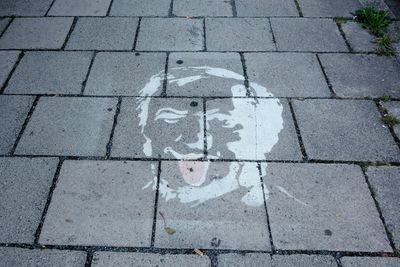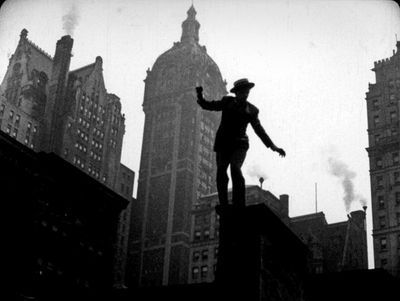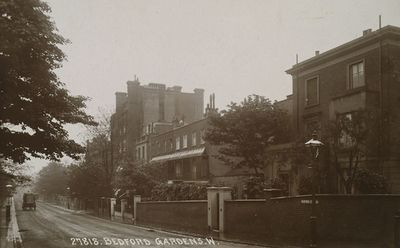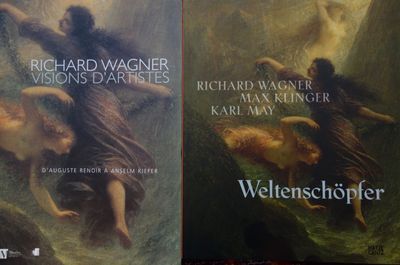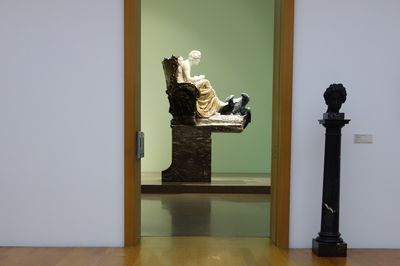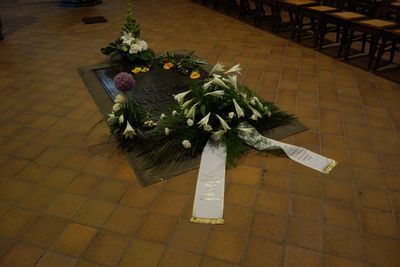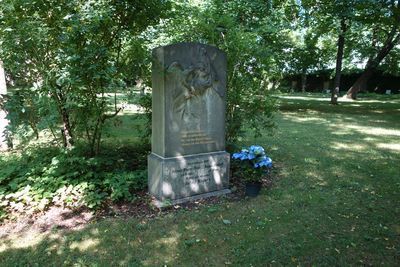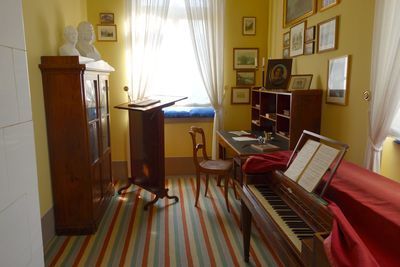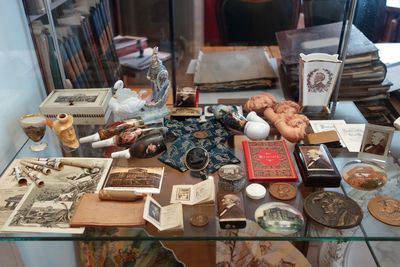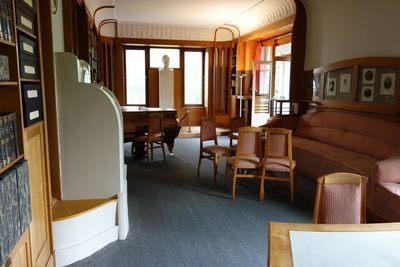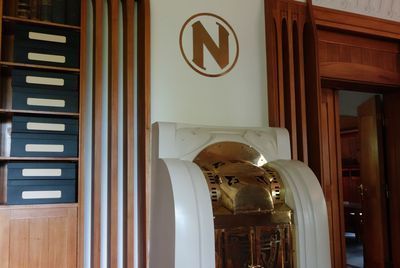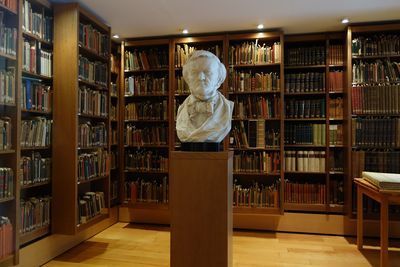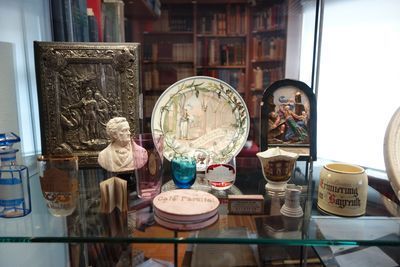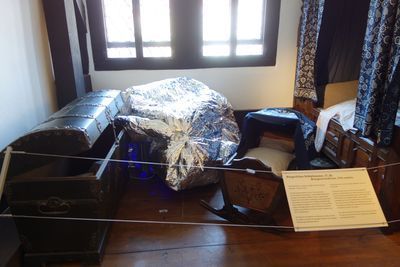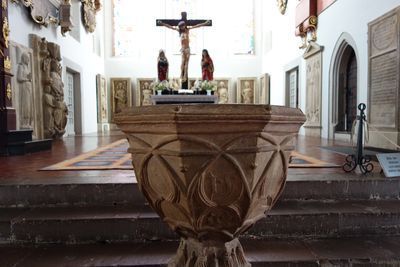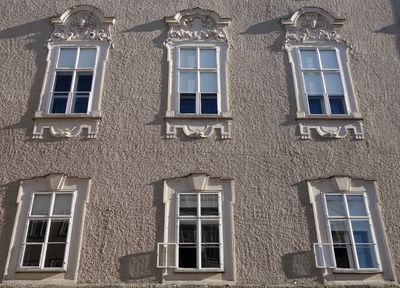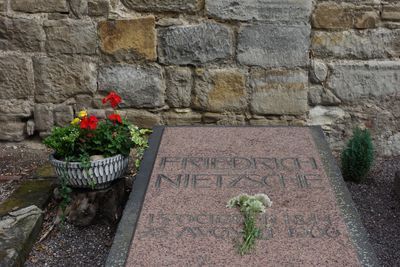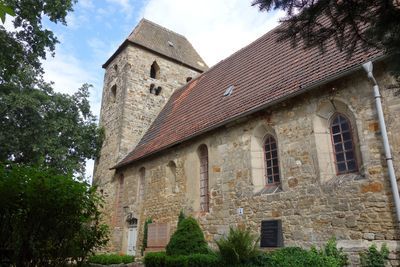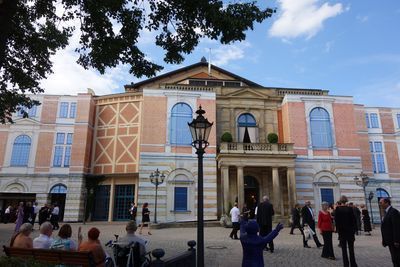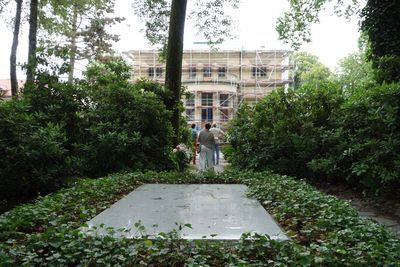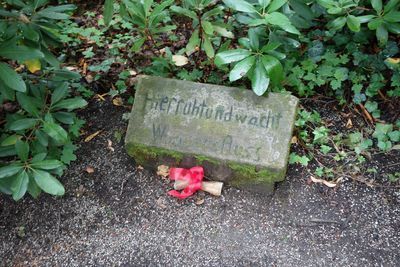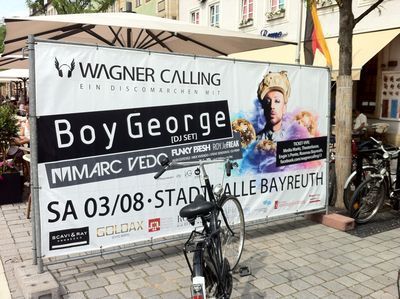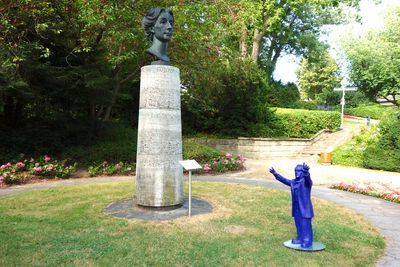Alex Ross's Blog, page 166
August 8, 2013
Nightafternight playlist
New releases of interest.
— Elizabeth Brown, Mirage (New World)
— Basically Bull: Keyboard works of John Bull and others; Alan Feinberg, piano (Steinway)
— Timo Andres, Home Stretch (Nonesuch) [see also Mozart by Andres]
— Saariaho, Chamber Works for Strings, vol. 1; Meta4 (Ondine)
— Marko Nikodijevic, dark/rooms; Ensemble musikFabrik, etc. (col legno)
Unmissable streaming audio: Götterdämmerung at the Proms
Unseen Welles
August 5, 2013
Chéreau's Elektra in Aix
August 4, 2013
Aldridge notes
Here are a few belated footnotes to my piece on Ira and Luranah Aldridge, which appeared in The New Yorker a couple of issues back. Mainly, I'd like to thank those who helped to bring this unusually complicated project to fruition: archivists at the Charles Deering McCormick Library of Special Collections, Northwestern University Library, who let me spend time with their Aldridge materials; Nicholas Vazsonyi and Julie Hubbert, who commissioned my "Black Wagner" lecture for the WagnerWorldWide Conference at the University of South Carolina last January; Jens Laurson, who shed light on the correspondence between Houston Stewart Chamberlain and Cosima Wagner; Oliver Hilmes, biographer of Cosima, who answered questions about the Meisterin; and, especially, Kristina Unger of the Richard Wagner Museum in Bayreuth, who has been extraordinarily helpful at various stages of this project and with my Wagnerism book in progress.
Some books and articles that proved helpful in my research: Bernth Lindfors's three Ira Aldridge books; Herbert Marshall and Mildred Stock's classic biography of the actor; Paul Gilroy's remarkable study Black Atlantic; Hazel Waters's Racism on the Victorian Stage; Jeffrey Green's Black Edwardians; Marvin McAllister's White People Do Not Know How to Behave at Entertainments Designed for Ladies & Gentleman of Colour; George A. Thompson's Documentary History of the African Theatre; Shane White's Stories of Freedom in Black New York; Sander Gilman's On Blackness without Blacks: Essays on the Image of the Black in Germany; Russell Berman's essay "Du Bois and Wagner"; Kenneth Barkin's "W. E. B. Du Bois's Love Affair with Imperial Germany"; Kira Thurman's “Black Venus,
White Bayreuth"; Kwame Anthony Appiah's "Ethics in a World of Strangers"; and, of course, David Levering Lewis's monumental Du Bois biography.
More material related to Luranah will surely come to light. I'd be particularly interested to know where and when she might have sung the role of Erda; a signed photograph from the soprano Félia Litvinne suggests that she did. And it would be good to learn more of Luranah's musical siblings, the singer-composer Amanda Aldridge and the pianist-composer Ira Frederick Aldridge. The Northwestern collection contains various compositions by the two; the latter's "Luranah," presumably named for his sister, seems an ordinary parlor song at first glance but contains some surprising chromatic twists. As I note in the piece, Ira Frederick came to a tragic end, flinging himself from a window in a fever-induced delirium. Amanda, on the other hand, lived to a grand old age. Incidentally, for a time the sisters lived in a house in Bedford Gardens, next door to the composer
Frank Bridge. They might have seen young Benjamin
Britten, Bridge’s star pupil, darting in and out.
Previously: At the grave of Luranah Aldridge.
A day in Leipzig
A brief report on my second Ring-week excursion, to Leipzig, by way of Röcken. The main motive for the trip was an exhibition entitled "Weltschöpfer: Richard Wagner, Max Klinger, Karl May," at the Museum der bildenden Künste. The concept of the show is a bit elusive, but it provides a fascinating panorama of mythic, fantastic, and nature-inspired works, ranging from Fantin-Latour's Rhinemaidens picture to new installations by the artist Rosalie. There's a sumptuous accompanying catalogue, whose Fantin-Latour cover image unfortunately duplicates the 2005 catalogue Richard Wagner: Visions d'Artistes. One highlight of the permanent collection is Klinger's astonishing Beethoven monument:
Needless to say, I stopped at the Thomaskirche to pay my respects to what are assumed to be the remains of Bach:
There's a good exhibition of Wagner instruments at the Grassi Museum: one can get a close look at Steingraeber's singular Grail-bells contraption, an upright piano with four keys. In back of the Grassi is the old Johannes cemetery, which has the graves of Wagner's mother, Johanna Wagner-Geyer, and of his sister Rosalie:
Wagner was, of course, born in Leipzig, and the city has set up a website with an extensive Wagner itinerary. Defying the spell of the old wizard, I spent my last hour in Leipzig not at one of the auxiliary Wagner sites but at the Mendelssohn House, an excellent museum that was opened in 1997, in Mendelssohn's old apartment. Particularly lovely is the re-creation of Mendelssohn's study:
A day in Weimar and Eisenach
When the Ring was presented at Bayreuth last week, there were two rest-days, one between Walküre and Siegfried and the other between Siegfried and Götterdämmerung. The true Bayreuth pilgrim would have passed the time pondering the finer points of the Ring libretto over an Eiskaffee, but I took the opportunity to go on two extended drives, becoming well acquainted with the A9 Autobahn that goes north toward Berlin. First, I went to Weimar and Eisenach, and two days later I spent an afternoon in Leipzig. Here are a few stray notes from the road, which may be of use to fellow travelers; a Leipzig post will follow.
In Weimar, I engaged in a bit of Harry Kessler tourism, stopping at the Palace Museum to see the collection of post-Impressionist art that Kessler assembled when he was directing the Museum für Kunst und Kunstgewerbe. (I wrote about Kessler for The New Yorker last year.) As a Salomite, I especially enjoyed Lovis Corinth's portrait of Gertrud Eysoldt in the role of the princess. I also looked in on the Nietzsche Archive, which resides in the villa where the philosopher spent his last years. One of the most unforgettable passages in Kessler's diaries describes his stay at the Nietzsche house, his sleep interrupted by howls in the middle of the night. When the house became an archive, Henry van de Velde, Kessler's close collaborator during his Weimar period, redesigned the ground floor (photos above). I made time as well for the Liszt House and the Bauhaus Museum.
I drove on to Eisenach, which I'd never seen. The Wartburg is something of a tourist trap, but no Wagnerian can afford to miss it. Down the slopes from the ancient fortress is the Reuter-Wagner-Museum, which houses the extaordinary collection of Wagneriana assembled by Nikolaus Oesterlein and first exhibited in Vienna. (Here's an 1882 version of the Oesterlein catalogue.) Display cases are well stocked with Wagner knick-knacks of the late nineteenth century:
The Vienna Parsifal train of 1884:
I then walked to the center of Eisenach, in order to see two major sites associated with Johann Sebastian Bach, born in the town in 1685: the Bachhaus, the birthplace museum; and the Georgenkirche, where the baby Bach was baptized. As it turned out, Wagner's shadow was inescapable: scattered around the Bachhaus were twelve sound-and-light installations gathered under the title Wagner Licht. Most of these were fairly trivial: several New Age-y remixes of famous Wagner motifs, a tedious meditation on Wagnerian politics (the composer's eyes flashing red with Holocaust images superimposed). But I rather liked Maike and Daniel Statz's How Everything Was, in which an aluminum-foil object representing Erda appears inexplicably in one of the bedrooms of the house. How typical of Wagner to barge into Bach's devotional realm on the occasion of his anniversary — I don't recall seeing many Bach installations at Bayreuth in the Bach year 2000:
The Bachhaus is a lovely and informative museum, but it gives few intimations of the presence of the Master. The Georgenkirche is another matter. In 2011 I wrote about John Eliot Gardiner's majestic Bach Pilgrimage, noticing especially the “Christ lag in Todesbanden” recording made in Eisenach; in his liner notes, Gardiner speaks eloquently of the experience of performing Bach's great meditation on death within sight of the font. Indeed, there is something absolutely uncanny about the object itself; it seems to stand outside of time.
The day of my visit was the 263rd anniversary of Bach's death, and I was fortunate to catch a short recital by the fine Dutch organist Eric Koevoets. "I wish you open ears and an open heart," a cleric said, introducing the program. During the Fantasia and Fugue in C Minor, a baby began crying in the back of the church. I went away feeling suitably overawed.
August 2, 2013
Salzburg
July 30, 2013
At the grave of Nietzsche
Röcken, not far from Leipzig, where Nietzsche's father was the pastor. "Other birds will fly farther"—but not yet.
July 27, 2013
Snapshots from Bayreuth (updated)
The Festspielhaus is under renovation, and much of the façade is hidden behind a protective simulation.
Wahnfried, too, is a construction site, although Wagner's grave is unmolested.
Someone went to the trouble of leaving a festive bone for Russ, the composer's beloved dog, who lies next to him.
I did not try the Wagner cocktail.
Sadly, I will miss the Wagnerian DJ night with Boy George.
The Meisterin may well be thinking, "Get that thing away from me." The artist Ottmar Hörl, who perpetrated the Russ homage in 2004, is responsible for these multicolored statuettes, which are scattered all over the grounds of the Festspielhaus. I'll have a review of the not uncontroversial new Bayreuth Ring in a future issue of The New Yorker.
Alex Ross's Blog
- Alex Ross's profile
- 425 followers


